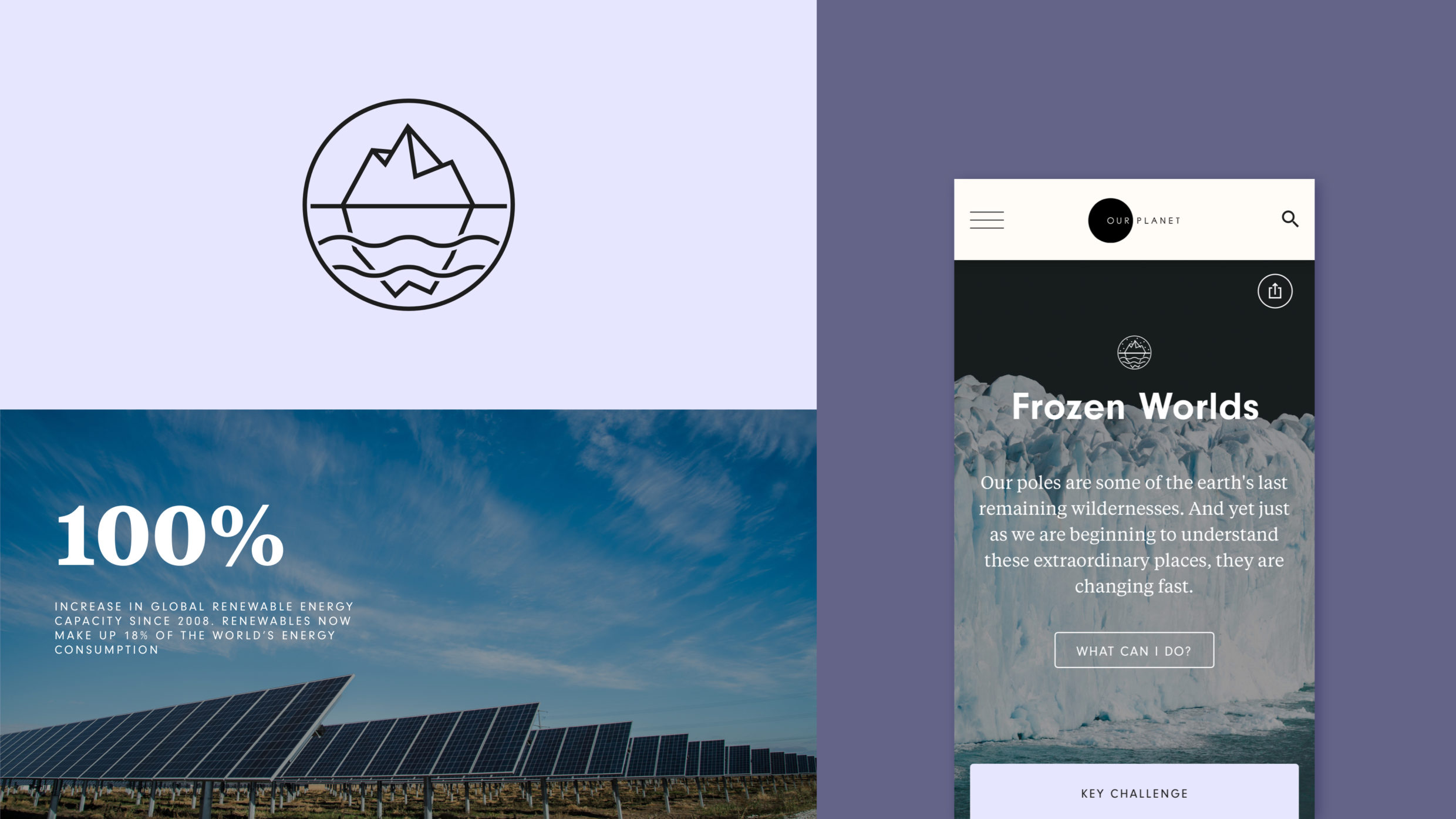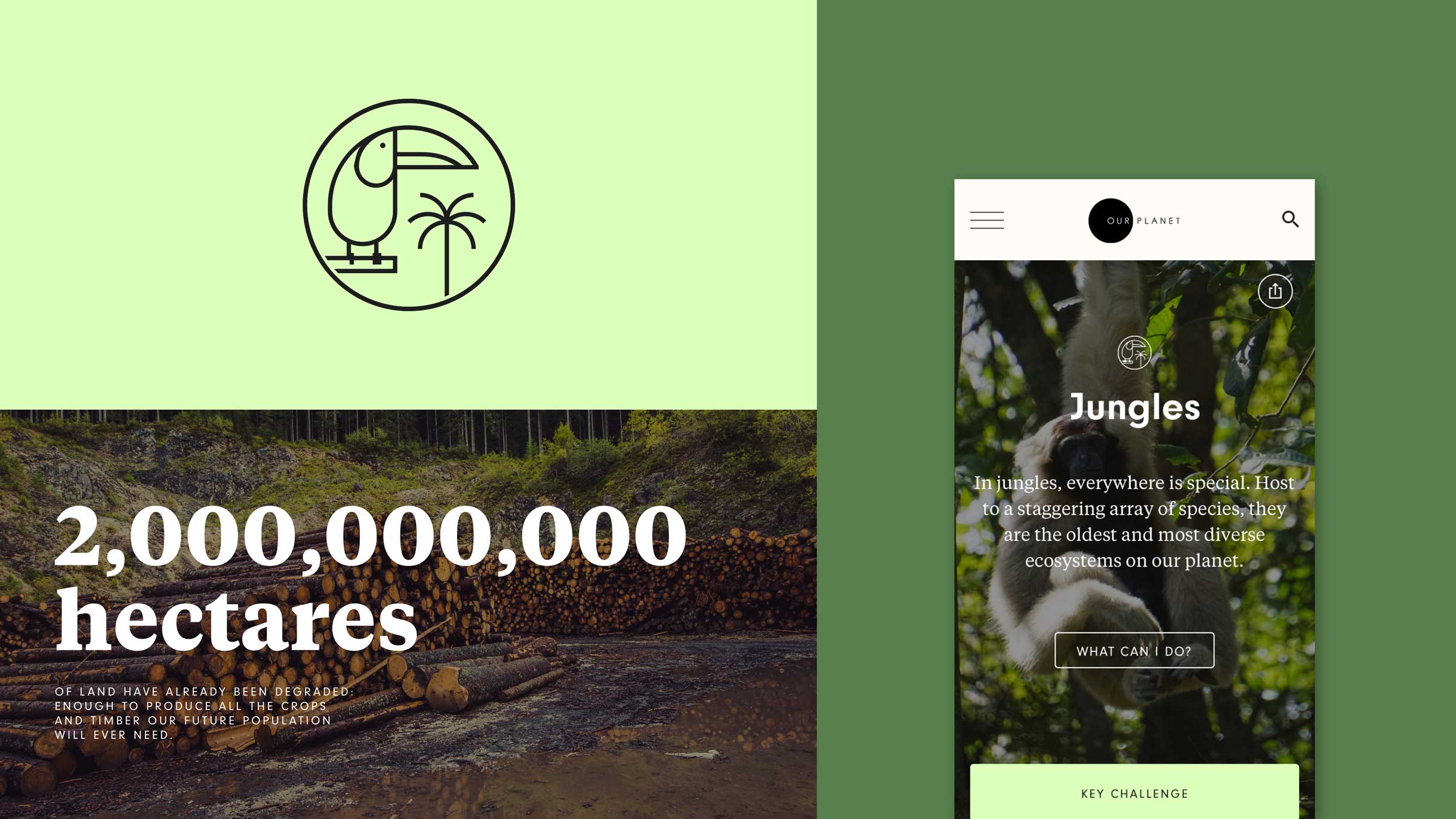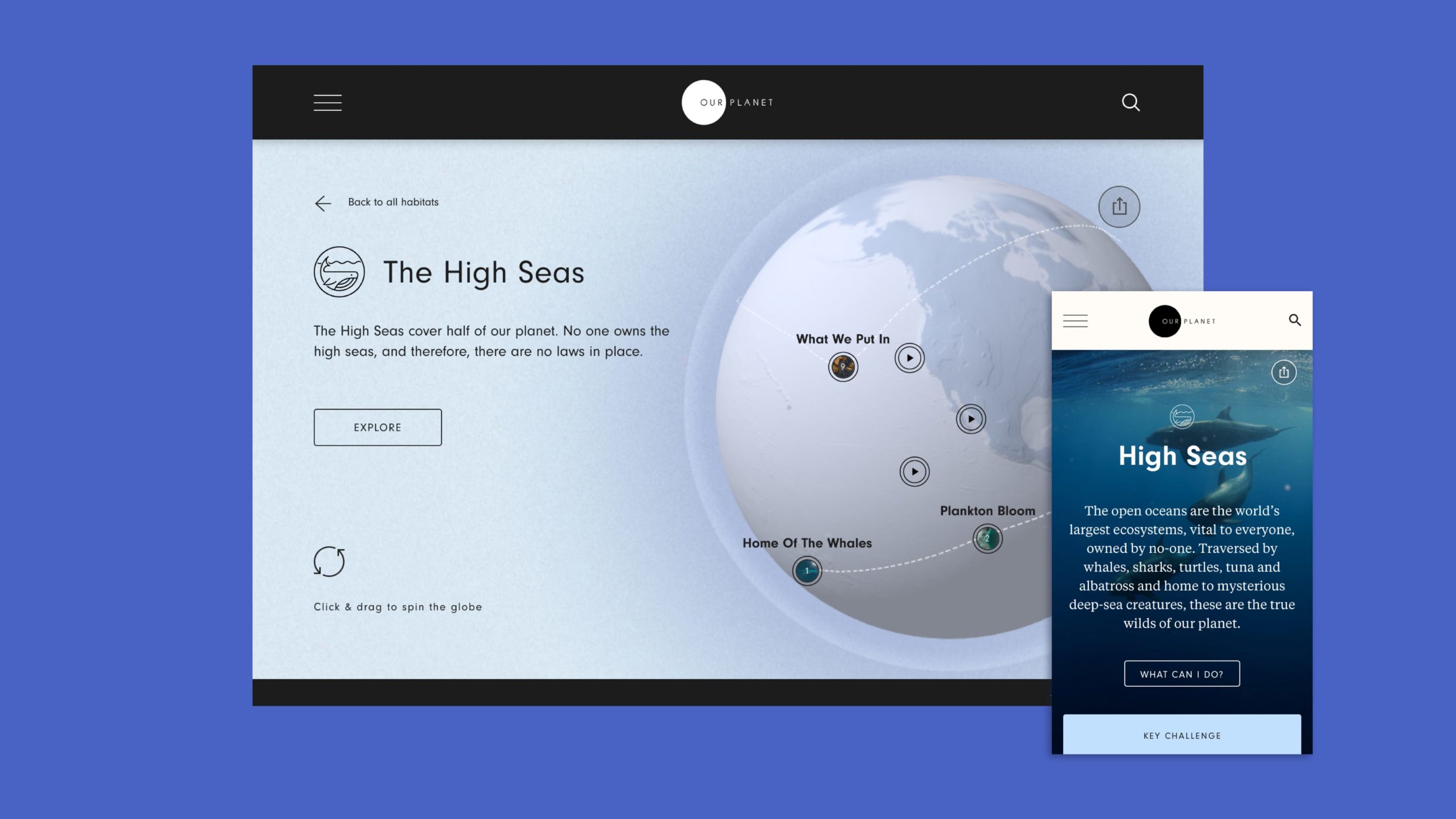
B-Reel
Our
Our
Planet
Television & Film /
People's Voice Winner
B-Reel
Television & Film
People's Voice Winner
The platform revolves around three major parts: the library, the Explorable Globe and Voice for the Planet. Combined, they take viewers on a journey that lets them see the world from a completely new perspective, while telling an important story of what we can actually do to make it thrive.- B-Reel Team

What breakthrough or “a-ha” moment did you experience when concepting or executing this project?
One of the first things we realized was the huge amount of content, taken from the series itself along with extra material collected during the main shoots. It was a blessing, but also meant that we had to make some deliberate choices, and it wasn’t made easier by the fact that a lot was in production simultaneously as the platform itself. Working with several partners is always a challenge. In this case, WWF, Netflix and Silverback Films all had crucial roles, so seeing it work so well was a joy. Finally, it was important to be able to tell an intriguing and informative story using a lot of data. To do that, we worked hard to find a clear and appealing way of visualizing that.

Q: What influenced your chosen technical approach, and how did it go beyond past methods?
A: We had to consider different scenarios before deciding on what technical approach to take. For starters, we had to make it accessible and SEO-friendly in order to reach multiple countries, languages and audiences, while being flexible enough and simple to use for WWF to manage content. It also needed to be cost efficient and minimize server configuration and maintenance. Throughout the project, the client wanted to be able to use some components created for the site in other WWF-related activations, so it was important that we build it in a modular way. In the end, the approach used didn't differ vastly from other B-Reel projects, but it was for sure one of the most ambitious to date.
